Philips Android TV System 2015 Review
Philips Android TV System 2015
Hands on: The latest attempt to get Android onto a TV
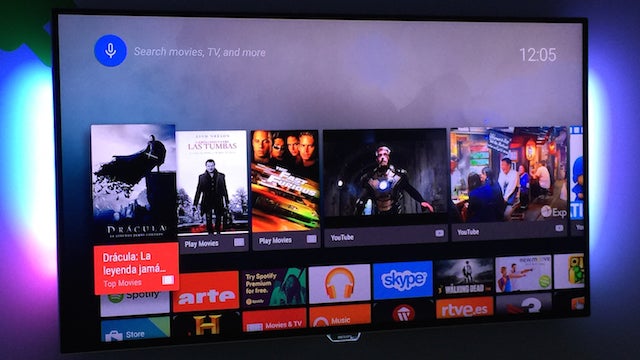
Verdict
Hands on with the Philips Android TV System 2015
Last year Philips tried to bolster its Smart TV arsenal by introducing
Android TV to some of its 2014 TV range. None of these Android TVs found
their way to UK shores, but that may have been for the best – they used
the outdated Android 4.2 Jelly Bean, meaning the TV experience they
delivered wasn’t all it might have been.
Thankfully Philips is
getting much more serious with Android in 2015. For starters it’s moving
to the new 5.0 Lollipop flavour, which is far more television-friendly
than the previous version. Also, Android is now available across a much
wider selection of Philips’ new TVs than before – 80% of the latest
range, in fact.
We took an early look at some of these new Philips Android TVs at a launch event in Barcelona…
SEE ALSO: Best TVs Round-up
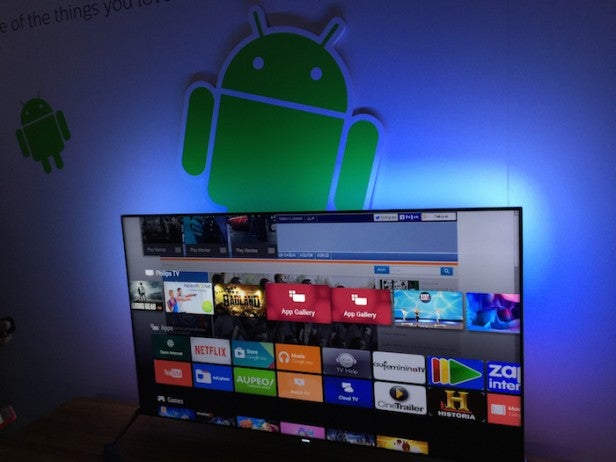
The
first thing that struck us during our time with the new TVs was how
much more effort Philips has put into foregrounding the Android
experience. There’s now a dedicated button on the remote control, and
this immediately opens the same Home Android menu screen familiar to
users of other Android devices, including Sony’s upcoming TVs.
This
menu is much cleaner looking and better organised than Philips’
previous Android attempt. It’s organised in so-called shelves that you
can scroll along horizontally, with the top shelf showing recommended
content. These recommendations can come from any app that chooses to
support them, such as YouTube, Google, and video apps like MaxFilm.
Netflix has opted out for now, though, as it prefers to use its own
recommendation metrics.
It’s worth adding that the
Recommendations shelf will only feature content suggested by apps you’ve
installed on your TV, so you won’t find yourself clicking on a link
only to be presented with a “you need to download the app first”
message.
The second shelf down is the Philips TV shelf. This
shows links to stuff Philips thinks you might like, such as new apps or
popular apps you might not have downloaded yet. It’s easy to imagine
this descending into a glorified advertising shelf, but Philips assures
us it intends to treat it instead as a means of helping you expand your
experience. During our hands-on, for instance, the shelf was suggesting
that we tried out the new Spotify app – something you may not have
realised was available, but which you may well want to use.
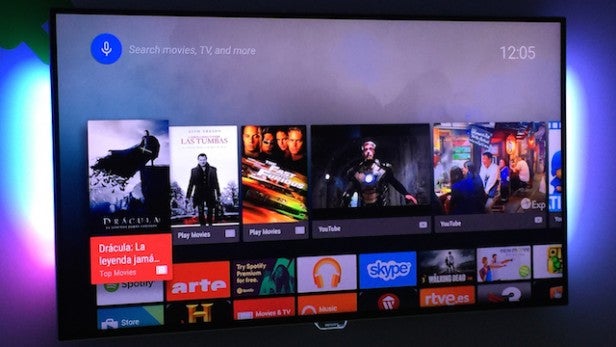
Below these two top shelves are the app store, game and Setting shelves, which do exactly as you’d expect.
One
thing that feels like it’s missing from this shelf list is an easy way
of accessing and tracking TV broadcast content. Instead, Philips has
added a separate TV menu – accessed via another dedicated remote control
button – which lets you separate TV shows into specific types and
genres. It’s just not as neatly integrated as it is on some rival Smart
TV offerings, such as LG’s webOS 2.0, Samsung’s Tizen-based system and, to some extent, Panasonic’s Firefox OS-driven My Home Screen 2.0, which all treat broadcast content as apps.
Another
limitation of the Android home screen is that it doesn’t permit
customisation. So, for instance, you can’t set up your own personalised
shelf containing just links to your favourite apps. Nor can you tailor
the home page in any way – even the recommendations shelves – for
individual members of your family, say. The same home page greets all
who access it, and the recommendations made cover the gamut of show
types watched by everyone in your household. Though fans of “mature”
content will be pleased to note that the recommendations list is time
sensitive, and so won’t suggest material that’s not suitable for
children ahead of the watershed…
Obviously you have to allow the
TV to share your viewing habit data with Philips’ servers if you want
the recommendations system to work effectively. If you don’t, this shelf
will only be able to show content that’s generally popular in your
territory.
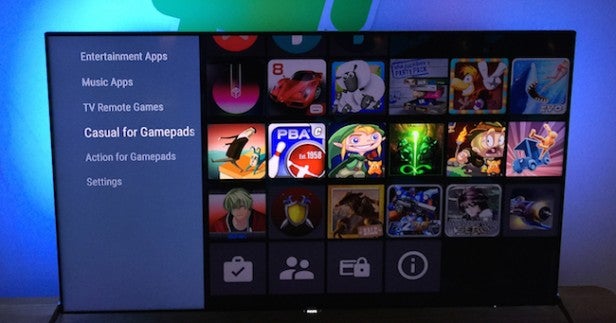
Getting
back into more positive territory, Android supports
multitasking, enabling you to have multiple apps running
simultaneously. In fact, a multi-view option lets you actually see two
at once. Plus there’s “hot-swapping”, so that if you switch from one app – YouTube, for example – to another and then go back to the original one, it
will pick up that first app where you left it.
Android opens up a few extra control options too. There’s now a
mic built into the newly designed remote control to support voice
recognition, and Google Cast support for enhanced control and content sharing with other Android devices.
The new
Philips smart remote also features a swipeable area, so you can move around
the menus and built-in browser more quickly without having to use a
normal set of up, down, left and right buttons.
We were
disappointed to note, though, that the new Philips Android TVs don’t
support free floating point control – in other words, you can’t use the
same highly effective “point and click” approach possible with TVs from
LG and, more recently, Samsung. This is because the Android platform
doesn’t support point and click, not because Philips didn’t want to
offer it as a control option.
Also, the remote’s swipe pad and voice control options are only available on the
relatively high-end 7000 series models in Philips’ new range. You don’t
get the smart remote on the 6000 series or below.
Given the huge
amount of apps available on the Android platform, any Android TV is
going to have to come equipped with some storage. Most of
Philips’ new Android sets give you 8GB of internal memory, while the
7000 series doubles this to 16GB. However, given that a chunk of this
memory – as much as 4GB – is eaten up by the requirements of the OS, and
some of the games you can download from the Google Play store come in at
5GB each, it’s good to know that you can expand the available memory via
USB drive.
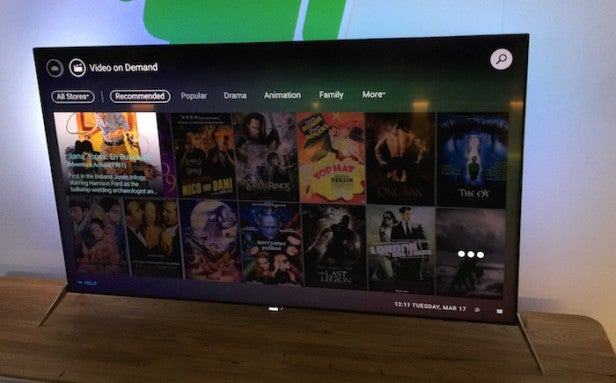
One
of the most important things about the new Android Lollipop system on
the latest Philips TVs is the way it can automatically strip out apps
that just wouldn’t work on a TV for graphical or control
reasons. So you get far fewer apps in the Android TV
environment than you do through phones and tablets. However, you still get a very impressive number of apps by
typical Smart TV standards – and vastly more than Philips offered through its proprietary Smart system.
You can circumvent Android TV’s app screening process by “sideloading” .mpk app files if you wish –
though it’s hard to imagine many circumstances where this would be a
particularly good idea.
Clearly both Philips and Google will be
hoping that app developers will start to work on future apps with TV in mind – and indeed, there are already some promising signs
that this might be the case. For instance, Philips assured us that
although there’s no Netflix or Amazon UHD streaming support currently
available for Android Lollipop TVs, they’re expecting these apps to appear
by the summer. Philips also announced new
relationships with Electronic Arts and Gameloft, who are busy optimising
some of their most popular games for use on the Android TV platform.
This
new game support comes on top of the OnLive streamed game
platform that was introduced on last year’s Philips Android TVs. What’s
more, Philips was keen to stress during our discussions with them that
OnLive has been busy making significant improvements to latency, which can so negatively affect streamed gaming. In fact, OnLive
has taken the stance of only rolling its service out to different
territories once it’s confident that it can achieve a suitable level of performance.
Intriguingly,
integrating Android Lollipop into the latest Philips TVs has opened up
the possibility of some smart home applications on top of the usual
video streaming, gaming and infotainment content. Particularly promising
is the work being done with independent UK developer
MyLiveGuard to offer integrated control via Android TV of your home’s
lighting, doors, security cameras and even a Nest heating control/smoke
alarm system if you have one installed.
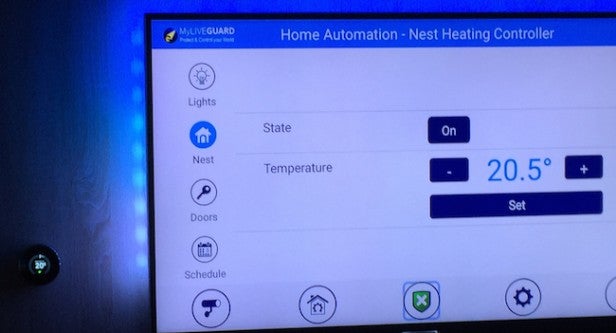
An
increasingly important element of any Smart TV platform is its ability
to grow and adapt over time. However, it’s impossible to forget that the
Android system introduced on Philips’ 2014 Android TVs can’t actually
be updated to this year’s Android Lollipop system. The leap in
functionality offered by the latest platform is just too great to be
delivered via anything other than a hardware implementation. Google is
keen to stress, though, that it believes it will be able to update the
Android Lollipop TV OS for three years without the need for new
hardware, so a 2015 Philips set won’t be out of date as soon as you get
it home.
We mentioned to Philips the possibility of turning
towards some sort of external, upgradable processing box for future TV models, along the lines of
Samsung’s OneConnect box. But Philips’ response was that their research
suggests people are more interested in having all their functionality
built into their TV than they are in paying to upgrade external devices.
While
there are many things to like about the latest 5.0 Lollipop version of Android on
Philips TVs, there are a few concerns too. First, the lack of any
personalisation options could make for an awkward and, if your family
viewing habits are varied, unhelpful look to the
Recommendations shelf that’s such a key part of the
content-finding experience.
Next, Android isn’t well equipped to
offer the localised catch-up TV services we’re used to finding on Smart TVs now. Philips is continuing to also offer its
home-grown Smart TV OS alongside the Android one, but that platform also
fails to offer anywhere near the full gamut of key UK catch-up services.
SEE ALSO: All of our TV reviews
One
other intriguing issue is that any brand that uses the Android OS
is suddenly making itself dependent on Google
rather than having its entire business model in its own hands. This is already affecting Philips, as it finds
itself unable to launch these new TVs until
the summer while Google irons out a few
wrinkles. Also, Google is a distinctly global organisation, not as
accustomed as the TV brands to the sort of localisation processes and deals
required for optimising TVs and app support for different sales
territories.
On the other side of the coin, though, partnering
with Google saves TV brands a small fortune in R&D compared with
trying to put together their own individual Smart platforms and content packages. This could potentially help TVs become cheaper, and
certainly allows brands
to suddenly expand their Smart offering substantially.
Our first look
at Philips’ latest Android TVs underlines our expectation that 2015 is
likely to be a pivotal year in the development of Smart TV, as in-house
systems such as LG’s webOS and Samsung’s Tizen go head to head with “third-party” Smart engines like Sony’s and Philips’ Android TVs and, to a
lesser degree, Panasonic’s Firefox OS.
Keep an eye out for future
reviews to find out which of these very different Smart TV approaches wins
out.
How we test televisions
We test every TV we review thoroughly over an extended period of time. We use industry standard tests to compare features properly. We’ll always tell you what we find. We never, ever, accept money to review a product.

